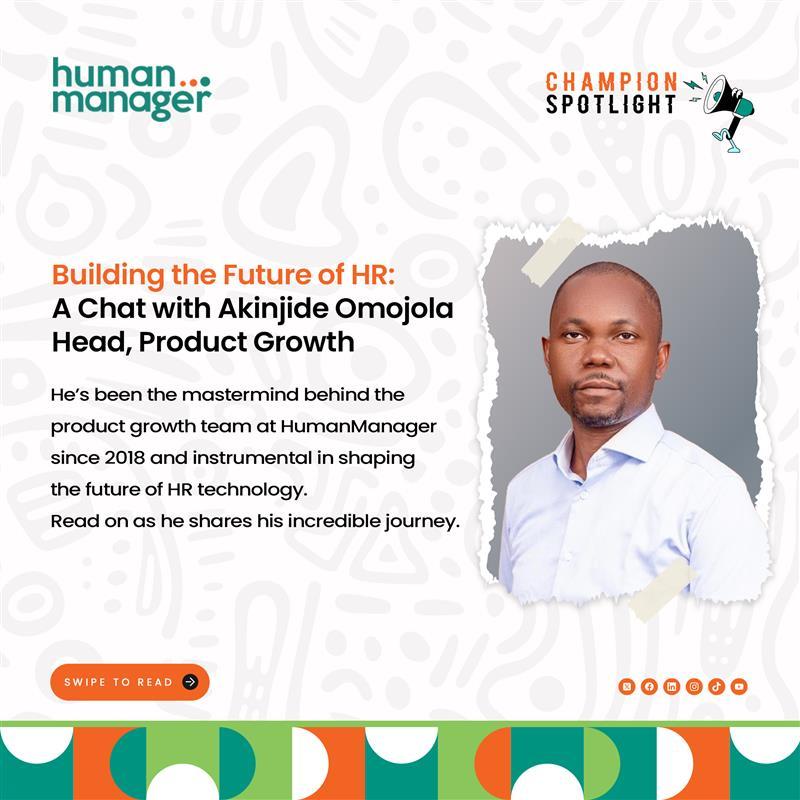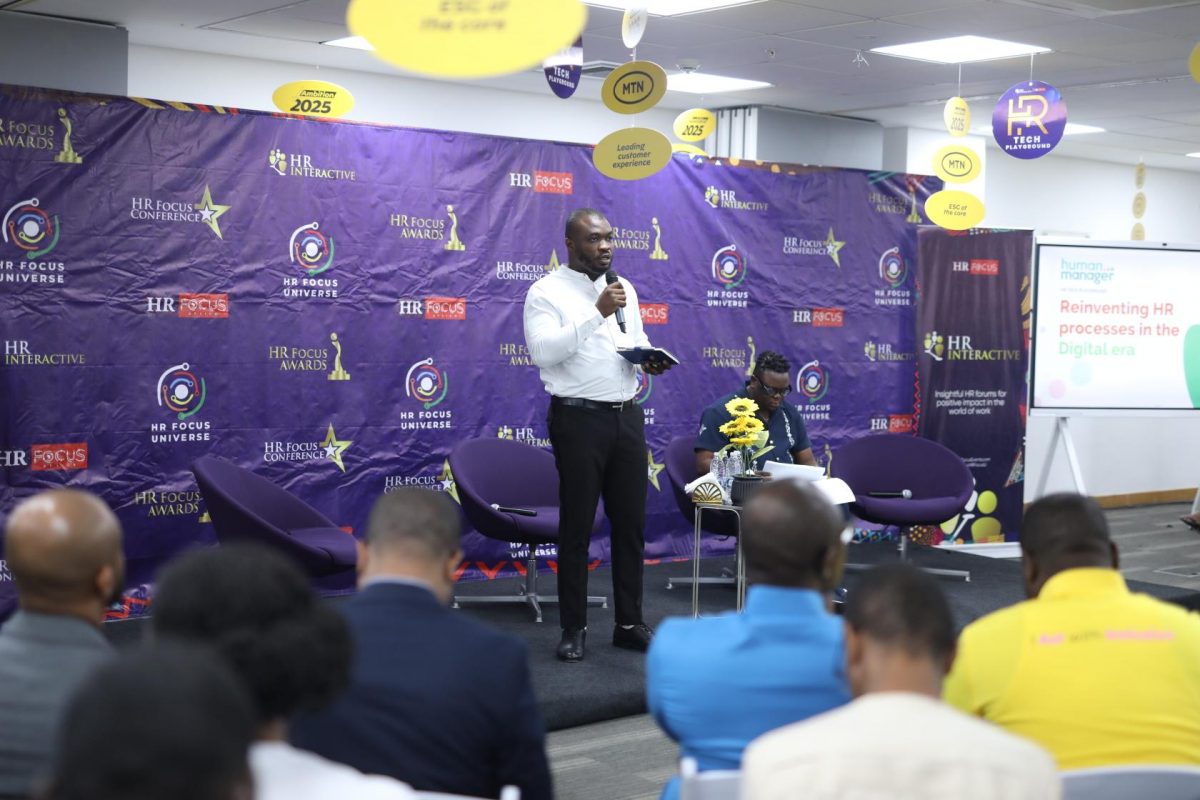In this episode of Champion Spotlight, we are thrilled to feature Akin Omojola, the mastermind behind the product growth team at HumanManager since 2018! He has been instrumental in shaping the future of HR technology, and his passion for innovation is truly inspiring. Read on as he shares his incredible journey.
Share a little background into your role at HumanManager
I have led the product management team since 2018. Some major achievements include the launch of Remita Payroll in Ghana, a partnership with First City Monument Bank (FCMB) to deploy a white-labelled payroll product for MSMEs, and optimising HumanManager with version 7.0 while ensuring that the brand remains at the forefront of the HR tech industry.
What inspired you to pursue a career in Product Management?
I always wanted to build technology products. It is as simple as that. With my background in Java version 1.4/1.5 and Linux server management, as well as implementing, supporting, and training people in HR tech solutions, I discovered that I have a knack for developing products at the intersection of people and technology.

What has it been like working in HumanManager and what do you do in your free time?
It has been challenging and rewarding. The work environment stimulates growth, knowledge exchange and collaboration across teams. You also get to be built by people and build up others along the way. When I am not working, family, church, and cherished relationships take centre stage.
What project or accomplishment are you proud of at HML?
The biggest achievement would be birthing a new HumanManager. This was achieved with the collaborative effort and support from our Group Managing Director, John Obaro, and past/present leaders who urged us on to bigger successes. Shout out too to our exceptional devs team!

What motivates you to be innovative?
My value proposition is to be someone who identifies and creates value. Give me an Akara business or any one at all – you can be sure that I will give value in return. The second was ignited by a conversation with a competitor’s leader. I left him with an unwavering determination to keep HumanManager at the forefront of HR solutions in Africa.
If you could have lunch or dinner with any historical figure, who would it be and why?
I would share a meal with Jesus. He is the most influential person in history that exceeds all who came before and after Him. And in the realm of “mere mortals,” I chose Franklin Delano Roosevelt. I am impressed by his four terms as US president and his leadership during the World War.







